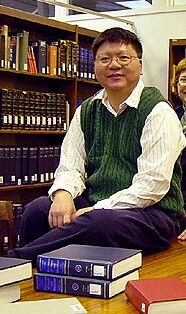MUS 361-03: 18th & 19th Century Music Literature
Dr. Seow-Chin Ong

Dr. Seow-Chin Ong participated in the Faculty Learning Community on Critical Thinking (FLC-CT) in Fall 2009. Dr. Ong made enhancements to his course, MUS 361 - 18th & 19th Century Music Literature for music majors to help his students think more critically. By incorporating the Paul-Elder framework for critical thinking into his syllabus that takes a learning-centered approach, Dr. Ong is able to encourage his students to adopt an intentional and systematic approach to critical thinking and music history, as well as take risks in analyzing and comparing musical pieces.
I think it is important to show and stress this fundamental point to students: that critical thinking is not merely an intellectual exercise that one practices in the isolated security of a classroom disconnected from the world at large, but that it has broader implications regarding what one does and how one lives.
Dr. Ong introduces the Paul-Elder approach to critical thinking to his students as a way to help them analyze various parts of their thinking. Specifically, Dr. Ong altered a listening assignment [PDF] for class discussion to incorporate the Elements of Thought, allowing his students to become more confident in both making sound conclusions, as well as defending those statements with logical and clear reasoning. In addition, Dr. Ong introduced a research paper assignment [PDF] to the class that focused on applying the Universal Intellectual Standards [PDF] to music history, as well as a group presentation assignment and music critique [PDF] that combines both the Elements of Thought and the Universal Intellectual Standards.
Finally, Dr. Ong turned his 20-minute music quizzes into 75-minute music discussions, using the critical thinking framework to increase his students' confidence and skills in completing a musical critique. By using the Universal Intellectual Standards and Elements of Thought as a guideline, students showcased the new critical thinking skills they had come to develop over the course of the semester.
The new format was an attempt to get my students to engage with the music more thoughtfully than merely giving me (one hopes) correct answers in quizzes. I wanted them to identify and respond to some of the music's most important features, to comment critically on them, and to compare and contrast them with music that they had previously studied.
